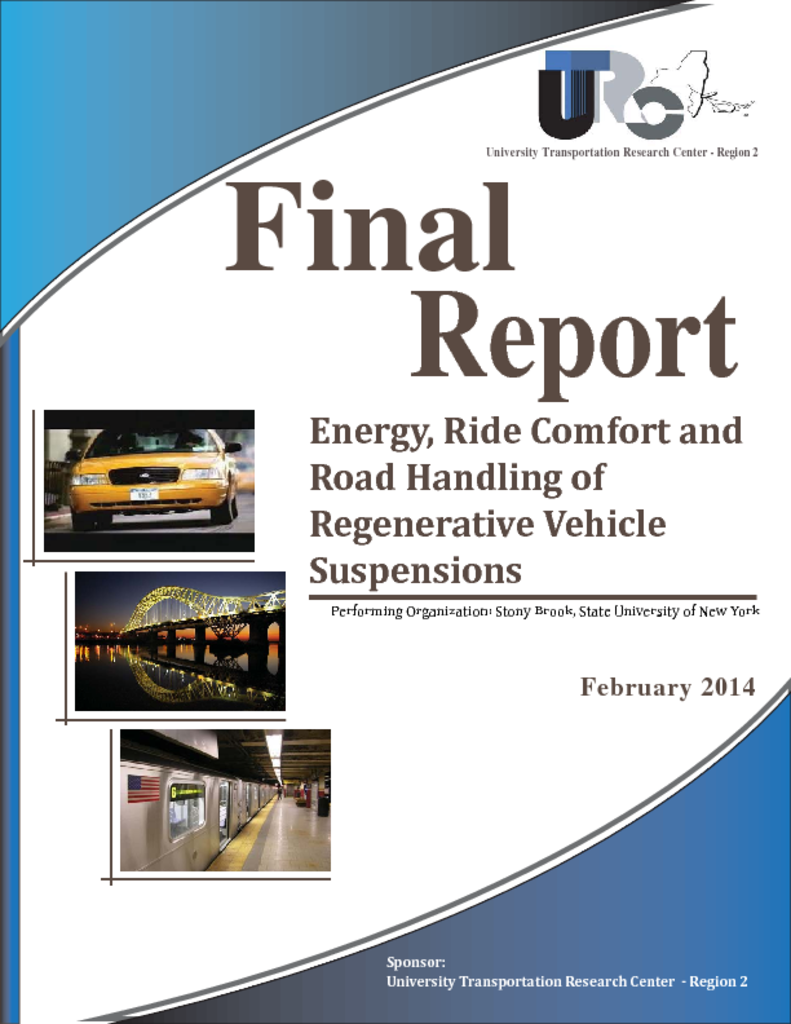In this project we report a comprehensive assessment of the power that is available for harvesting in the vehicle suspension system and the tradeoff among energy harvesting, ride comfort, and road handing with analysis, simulations, and experiments. The excitation from road irregularity is modeled as a stationary random process with road roughness suggested in the ISO standard. The concept of system H2 norm is used to obtain the mean value of power generation and the root mean square values of vehicle body acceleration (ride quality) and dynamic tire-ground contact force (road handling). For a quarter car model, an analytical solution of the mean power is obtained. The influence of road roughness, vehicle speed, suspension stiff ness, shock absorber damping, tire stiff ness, and the wheel and chasses masses to the vehicle performances and harvestable power are studied. Experiments are carried out to verify the theoretical analysis. The results suggest that road rough-ness, tire stiff ness, and vehicle driving speed have great influence on the harvesting power potential, where the suspension stiff ness, absorber damping, and vehicle masses are insensitive. At 60 mph on good and average roads, 100–400 W average power is available in the suspensions of a middle-sized passenger car. More energy harvesting potential is available for heavy-duty trucks and off - road vehicles.




